Diseases and main pests of cucumbers: signs of infection, control and prevention measures
Cucumbers are considered an unpretentious garden crop, they are actively planted in open ground, in greenhouses, in greenhouses, hanging on trellises... But whatever the growing conditions, cucumber pests and a variety of diseases can seriously reduce the quality of the crop.
Cucumber pests
Because of diseases and pests, cucumbers often die before the first harvest. But if in the first case you can find typical signs, then some pests conduct hidden activities, and it is not easy to fight them.
Gall nematode
This tiny parasitic worm is indistinguishable to the eye, but confidently destroys cucumber lashes (mainly in a greenhouse), damaging their roots. Growth is inhibited, the leaves droop, and if you dig a bush, then thickenings (galls) will be noticeable on the roots.
To avoid contamination, you can conduct a test: sow several cucumber seeds in advance, and when they sprout and release the first leaf, pull out and check the roots. If a nematode is present in the soil, bulges will be visible. An effective measure is the preventive spilling of the place under the cucumbers with boiling water, followed by covering for several hours with a black film.
You can fight the nematode with chemicals: BI-58, Rogor, Dimethoat, but during the fruiting period of cucumbers this is already dangerous. Biological agents are also effective: "Pecilomycin" and "Metarizin" based on the fungus. But often you have to remove and change the topsoil (up to 50 cm) in order to get rid of the bulk of the pests.
Advice
You can distract the nematoda from cucumbers by planting legumes nearby.
Melon aphid
If the flowers fall off on the cucumbers ahead of time, and the leaf plate loses its turgor and dries up, then, perhaps, a colony of melon aphids has settled on the plant. You can find it on the back of the leaves. Aphids not only spoil the appearance of cucumber lashes, but also let toxins and viruses into the sap flow system.
Insecticides can be used against aphids (Karbofos, Iskra, Commander), but only before the ovaries appear. If the cucumbers are already hanging, then it is better to use biological products ("Biotlin", "Fitoverm", "Bicol") or soap solution.
Whitefly
Whitefly is a small milky midge. Lives in places with poor ventilation and high humidity. For cucumbers, both she herself and the larvae, which feed on leaf juices, covering them with their excrement, are dangerous. The first sign of damage is small light dots on the leaf plate, and if you look under it, you can see a whole brood of midges.
Chemicals for pest control - "Aktara", "Confidor", "Aktellik". If there are ovaries of cucumbers, then it is preferable to "Verticillin", "Fitoverm".
Sprout fly
The pest itself - a brown big-eyed fly - may not be found, but its larvae actively feed on the embryos of cucumbers, penetrating into germinating seeds. After 2 weeks pupation and emergence will occur, but before that the cucumber crops will be destroyed.
Agrotechnical techniques are effective against the sprout fly:
- deep autumn digging of soil for cucumbers (autumn plowing);
- plowing manure (a favorite place for laying eggs);
- cleaning of plant residues.
Advice
If you plant cucumbers with already matured seedlings, then the larvae of the sprout fly are not afraid of it. They will not touch pre-treated seeds either.
Tobacco thrips
Thrips body is about 1 mm long. These are very nimble flying insects.Females lay numerous eggs in the thickness of the cucumber leaf plate. Infection is manifested by yellowish small spots - areas devoid of cell sap. Above is a scattering of black sticky dots - pest excrement. As a result, the flowers and leaves of cucumbers fall off, the lashes are deformed.
Thrips is one of the hardest pests to kill. It is difficult to cope with it using folk methods, so many summer residents prefer active drugs, such as Aktara, Iskra Zolotaya, and Komandor. But the most environmentally friendly option is to process the cucumber with Fitoverm several times. In order for it to begin to act, a number of conditions must be met: dryness, warmth, lack of sunlight.
Spider mite
The usual spider mite can be found on cucumbers only in open ground, since it does not tolerate high humidity, as in greenhouses. But the false spider mite loves to settle on greenhouse plants. In this case, the lashes of cucumbers are covered with small white dots and cobwebs. If you do not take urgent measures, plants dry out quickly.
If there are few bushes, then you can apply the folk method - a tincture of garlic: pour two chopped heads with 1 liter of water, leave for 5 days. At the end of the period, the mixture is filtered, half diluted with water. Cucumbers are sprayed with these remedies 3-4 times every other day. From chemical preparations "Actellik", "Neoron", "Apollo" are effective, from biological ones - "Fitoverm".
Medvedka
Medvedka is a huge (up to 10 cm) cricket with powerful front paws resembling those of a bear. This unusual insect lives mainly underground, making moves there, cutting the roots of plants and equipping nests. If a massive death of cucumbers has begun in a limited area, and small passages are visible in the ground, then these are traces of the presence of a bear.
There are several ways to ward off this pest of cucumbers.
- The easiest option is to pour soapy water (half a piece of laundry soap on a bucket).
- An original trap: about half a bottle of beer in a neck tied with gauze should be dug obliquely among the cucumbers. The insect will definitely find the bait in the ground, cut the gauze and fall into the bottle.
- You can find a nest (at a depth of 20 cm), orienting yourself along the paths among the cucumbers, and destroy it. The female usually protects the offspring, being nearby.
There are special chemicals: "Medvetox", "Bazudin", "Thunder".
Ants
Cucumbers suffer from aphid infestation largely due to the ants that carry them to suitable "pastures". These tireless insects love warm and dry places, so they willingly populate greenhouses and greenhouses. However, their underground life can have a depressing effect on cucumbers: ants actively move and gnaw at the roots.
You can fight with chemical agents ("Muravyin", "Raptor"), scattering them around the perimeter of the greenhouse or ridge.
Greener Methods - Decompose Natural Repellents:
- mustard powder;
- soda;
- branches of mint, tomatoes, coriander;
- cinnamon.
You can spill the soil with boiling water as a preventive measure before planting cucumbers. But this method can also kill worms.
Diseases of cucumbers
Both greenhouse and ground cucumbers suffer from approximately the same diseases. They are mainly attacked by fungi. The frequency of outbreaks depends largely on weather conditions.
A fungal infection on cucumbers is noticeable almost immediately, so there is a chance to prevent its development with regular careful examination of the lashes.
The following diseases are most common.
- Powdery mildew... If the leaves of the cucumbers began to "turn gray" (covered with a white bloom), this means that a powdery mildew fungus has settled on them. Soon it will cover the whips completely, leading to the death of the plant.
- Peronosporosis, which is also called downy mildew. Brown single or merging spots appear on the leaves of cucumbers. These are dried tissues devoid of juice.
- Cladosporium.Light green scattered spots are noticeable on the leaf plates, which soon turn brown. Unlike powdery mildew, cladosporium does not spare the fruit: small weeping ulcerations appear on cucumbers, leading to rot.
- Gray and white rot. The scheme of the defeat of cucumbers is the same: the stems and fruits soften, first become slimy, then covered with a fluffy bloom corresponding to the type of rot shade.
- Root rot. The stem of the cucumber is thinning and rotting at the very base. The roots look chafed and dark brown.
- Field mosaic (virus). Cucumber leaves are covered with a pattern of yellow-green randomly alternating "cubes".
- Speckled mosaics (white and green varieties) are also a virus. Small specks appear over the entire surface of the leaf plate of cucumbers, which quickly merge. The scourge turns gray, and soft depressions form on the fruit.
In the last two cases, treatment is useless. It remains to remove the surviving cucumbers and destroy the sick lashes. It is possible to return a vegetable crop to this place only after 4 years.
Cucumber treatment
If the scale of the lesion of the aboveground part is small, then cucumbers can be processed by the following means:
- decoction of horsetail;
- manganese solution (1.5 g per bucket);
- kefir or whey diluted with water (1:10);
- baking soda (dilute a tablespoon in 4 liters of water, add half a teaspoon of liquid soap);
- soda ash solution.
Important!
Spraying cucumbers with these means is not done once, but 2-3 times (every 5 days).
Biofungicides ("Planriz", "Fitosporin-M") with the active stage of the development of the fungus are already useless. Often it is possible to save cucumbers by treatment with a solution of colloidal sulfur or copper oxychloride. Proportions for the dilution of both products: 40 g in 10 liters of water.
If the fungus has grown on cucumbers, then only chemical preparations will effectively and quickly help: Topaz (ampoule for 10 liters of water), Fundazol, Quadris.
Treatment of rot on cucumbers
It is worth knowing and applying methods of dealing with the defeat of cucumbers with white and gray rot.
- Conduct an urgent top dressing by spraying on the leaf. Preparation of the product: dissolve 1 teaspoon of urea and a few grains (on the tip of a knife) of copper sulfate or "HOM" in 10 liters of water.
- Trim and destroy all affected leaves and spoiled cucumbers.
- Moisten a piece of rag in a raspberry solution of manganese and wipe the slimy and already coated parts of the cucumber shoots.
- Dust the cucumbers with ash.
If you suspect root rot infection of cucumbers, follow these steps.
- Carefully expose the top of the cucumber root system and examine it.
- If root rot is confirmed, replace the topsoil.
- Spill the roots of the cucumber with a solution: 2 teaspoons of copper sulfate, 6 tablespoons of lime or ash, dilute in 1 liter of water.
- After processing, allow the roots to dry.
- Remove the cucumber lash from the trellis (if tied), bend a part of the healthy stem in an arc to the moist soil for rooting, and hang the upper part again.
If the cucumbers wither for no reason, and the root system is in order when the topsoil is removed, then infection with verticillium is likely. The plant can no longer be saved, since this mushroom is resistant to the bulk of chemicals.
Prevention of cucumber diseases
Viruses are spread by sucking insects, with care items or soil, and several factors lead to the development of fungus on cucumbers:
- high humidity and coolness;
- planting density;
- excess nitrogen in the soil.
Advice
Potash and phosphate fertilizers increase the disease resistance of cucumbers.
When the cucumbers are already bearing fruit, the choice of spraying agents is limited. Antifungal chemicals are absorbed not only in the whip, but also in the fruit, which is then dangerous to eat for 20 days. Therefore, it is easier to take preventive measures to protect against diseases:
- before planting cucumbers, treat the soil with copper chloride;
- pre-saturate the soil with beneficial microorganisms using Fitosporin-M, Trichodermin, Nemabakt;
- mulch the soil under the cucumbers to prevent the activated fungus from climbing onto the plant; in a greenhouse, mulch will reduce evaporation by lowering humidity;
- in the phase of the first 2-3 leaves, spray the cucumbers with Topaz, at the beginning of flowering, repeat the treatment.
And if a lesion on cucumbers has already been noticed, then it is advisable to apply serial treatments with safe methods without the use of chemicals.
In a standard summer cottage, it is impossible to create ideal conditions for growing cucumbers: either the weather will let you down, creating favorable conditions for diseases, or due to the fence it will introduce pests. Knowing the signs of infection and parasitic insects "in the face", it is possible to protect the cucumber crop by the competent application of a set of preventive and therapeutic measures.

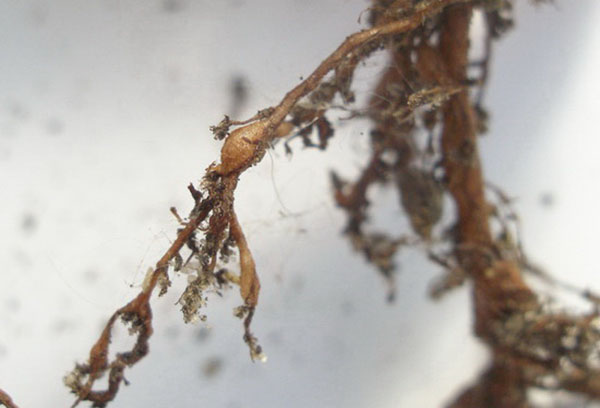
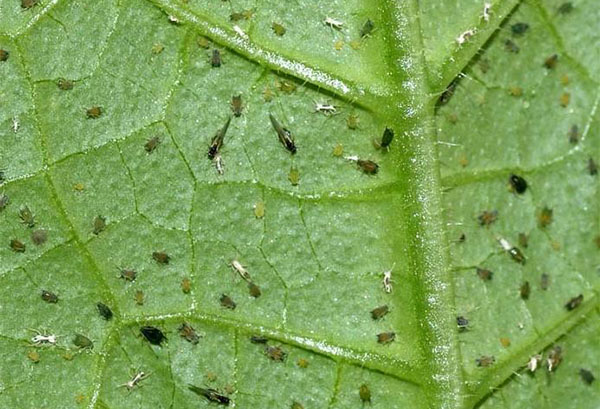
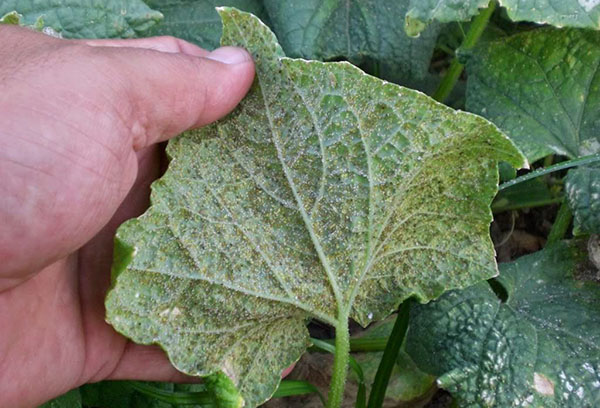
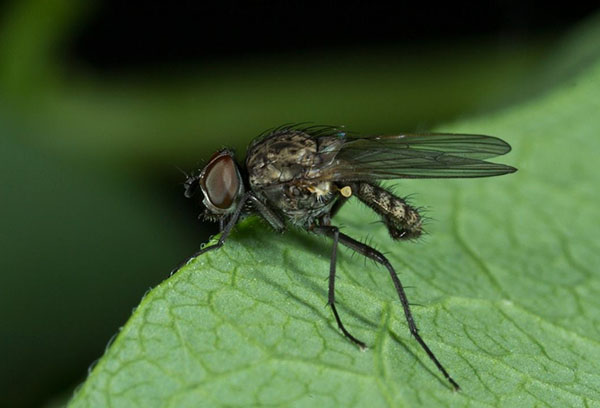
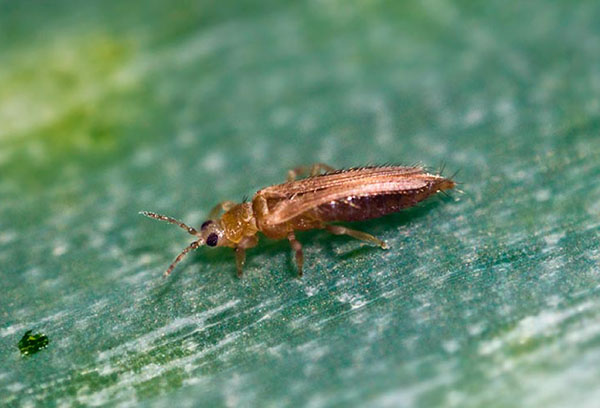
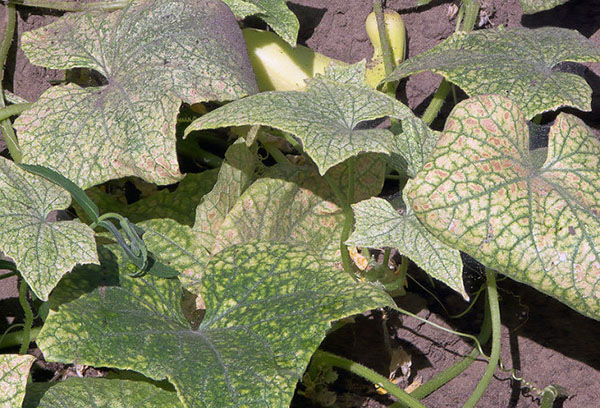

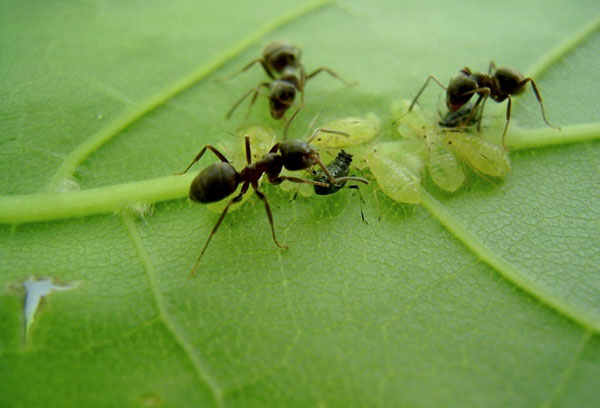
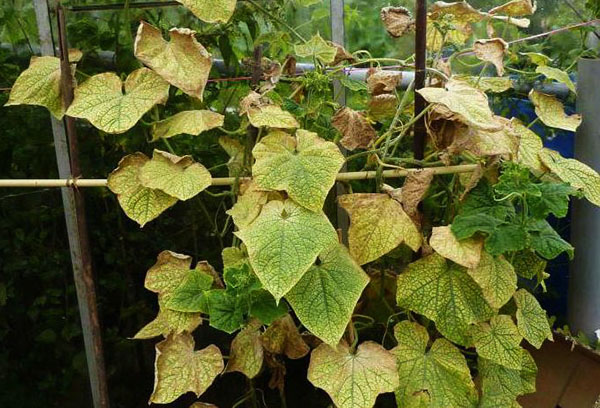
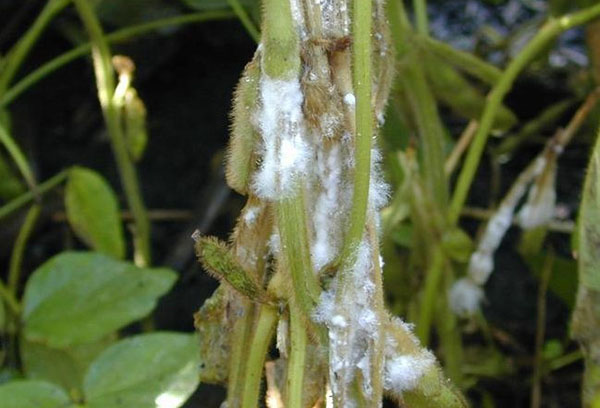
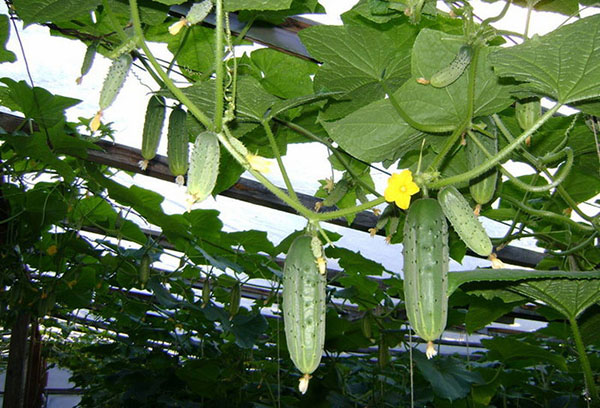
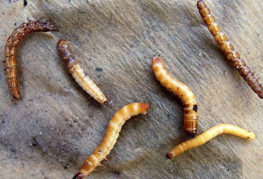

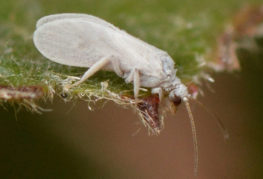
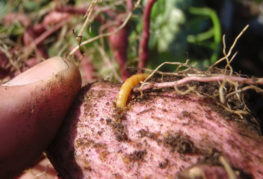
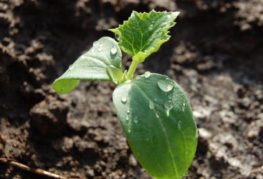

and will be published shortly.